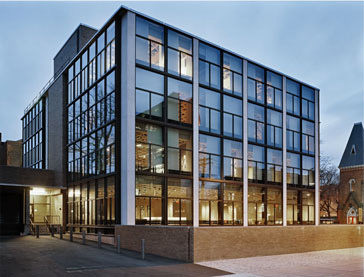Jun 29 2018 - Oct 7 2018
New Haven, CT
This landmark exhibition investigates a virtually unknown period in the career of Leonardo da Vinci, arguably the most famous artist of the Italian Renaissance. It focuses on Leonardo’s early years as an apprentice in the studio of the sculptor, painter, and goldsmith Andrea del Verrocchio, seeking to identify the young artist’s hand in paintings known to be collaborations with his teacher and fellow pupils.
Rather than relying on the claims of previous scholarship, the exhibition restores the primacy of visual evidence, encouraging visitors to look closely and carefully at works side by side. At the core of the exhibition is a pair of predella panels—The Annunciation, from the Musée du Louvre, Paris, and A Miracle of Saint Donatus of Arezzo, from the Worcester Art Museum, Massachusetts—that once belonged to a large altarpiece, the Madonna di Piazza, in Pistoia, Italy. These works have been documented as a commission to Verrocchio and were supposedly executed by another of his apprentices, Lorenzo di Credi; however, both paintings are, in one case entirely and in the other in large part, the work of the young Leonardo.
A selection of sculptures, cassone panels, and other paintings lent by international public and private collections—which have each been variously attributed to Verrocchio, Leonardo, Lorenzo, or other lesser-known artists—offers additional points of comparison, helping to clarify the personality of each artist and shedding light on the depth and nature of collaboration in Verrocchio’s workshop.
Credit: Exhibition overview from museum website.
Leonardo da Vinci, The Annunciation (detail), ca. 1475–79. Oil on panel. Musée du Louvre, Paris, M.I. 598. Photo: Centre de Recherche et de Restauration des Musées de France (C2RMF), Jean-Louis Bellec
Whether you go or not, the companion publication, Leonardo: Discoveries from Verrocchio's Studio: Early Paintings and New Attributions provides a groundbreaking reexamination of the beginnings of Leonardo da Vinci’s (1452–1519) life as an artist. It suggests new candidates for his earliest surviving work and revises our understanding of his role in the studio of his teacher, Andrea del Verrocchio (1435–1488). Anchoring this analysis are important yet often overlooked considerations about Verrocchio’s studio—specifically, the collaborative nature of most works that emerged from it and the probability that Leonardo must initially have learned to paint in tempera, as his teacher did.
The book searches for the young artist’s hand among the tempera works from Verrocchio’s studio and proposes new criteria for judging Verrocchio’s own painting style. Several paintings are identified here as likely the work of Leonardo, and others long considered works by Verrocchio or his assistant Lorenzo di Credi (1457/59–1536) may now be seen as collaborations with Leonardo sometime before his departure from Florence in 1482/83. In addition to Laurence Kanter’s detailed arguments, the book features three essays presenting recent scientific analysis and imaging that support the new attributions of paintings, or parts of paintings, to Leonardo.
Select Leonardo: Discoveries from Verrocchio's Studio: Early Paintings and New Attributions to learn more or to place this book in your Amazon shopping cart.
Exhibition Venues & Dates
Jun 29 2018 - Oct 7 2018
New Haven, CT


